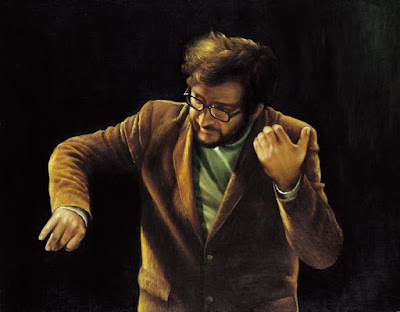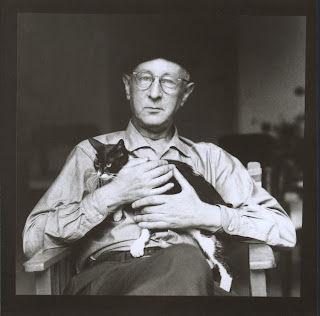The Basics: Berio's Duetti
Luciano Berio (1925–2003)
Duetti for two
violins
It can happen that a violinist friend tells a composer one night
that, other than those of Bartók, there are not enough violin duets today. And
it can happen that the composer immediately sets himself to writing duets that
night until dawn… and then more duets in moments of leisure, in different
cities and hotels, between rehearsals, travelling, thinking of somebody, when
looking for a present... This is what happened to me and I am grateful to that
nocturnal violinist whose name [musicologist Leonardo Pinzauti (1926–2015)] is
given to one of these Duetti.[1]
This is how Luciano Berio described the genesis
of the 34 Duetti for two violins.
With the exception of the first duet – a nod to those Bartók violin duos – each
of the pieces is associated with one of his friends, inspired by "personal
reasons and situations" and connected by "the fragile thread of daily
occasions."
The duets were composed over a period of five years, 1979–1983. Coincidentally,
in the years 1944–1988, Leonard Bernstein was writing his own occasional piano
pieces to celebrate birthdays and other occasions for his friends. He called his 31 pieces Anniversaries. While the idea is similar
to that behind Berio's Duetti, they
are dramatically different in style. But they have one interesting thing in
common. Pianist James Tocco remarked about the Anniversaries that
there is "much more in them about [Bernstein] than the people to whom they
are dedicated." Berio himself said as much of his own pieces, that it is
difficult to disentangle the personalities of composer and subject.
Selections from Berio's Duetti
Perf. Marta Roca & Guillermo Rubino
Usina del Arte, Buenos Aires, 2015
But Berio had something more in mind than a
series of brief "persona pieces":
In these duets there is also a pedagogical objective. Very often,
as can be heard, one of the two parts is easier and focuses on specific
technical problems, on different expressive characters and even on violin
stereotypes, so that a young violinist can contribute, at times, even to a
relatively complex musical situation from a very simple angle - the playing of
a D major scale, for instance.[2]
He was quite serious about this. In the
published score, a note from the composer says that they are "intended for
school violin teaching." The performance instruction goes on:
If the duets are performed in front of an audience, it is
preferable to involve a large number of players of different age and
proficiency. All the players (at least 24) will be seated on the stage: Each
pair will stand up only when it is its turn to play. There should not be any
pause between each duet.[3]
Koncert "Duetti per duo violini" (34 duety)
The "pedagogical objective" is nowhere more obvious than
in duet number 17 where Berio seems to be sharing an inside joke with (or
poking fun at) his friend Leonardo, the "nocturnal violinist" who
inspired the Duetti project. The
second violin part there is nothing more than a beginner's exercise – a
one-octave D-major scale in quarter notes slowly going up, then down. Repeated
five times. That's all. But even this, with the first violin's weft weaving
deftly around the second's simple warp, makes it, like all these little duets,
a real delight.




Comments
Post a Comment